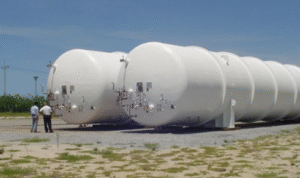Discover how heavy-duty industrial shelving solutions can revolutionize warehouse operations, optimizing space utilization and enhancing efficiency. From durable pallet racking systems to versatile mezzanine platforms, this article explores the key benefits and considerations of implementing robust storage solutions to streamline your warehouse workflow.
Importance of Heavy-Duty Industrial Shelving
Heavy-duty industrial shelving plays a crucial role in improving efficiency and organization within warehouses, factories, and other industrial settings. These heavy-duty shelves are designed to withstand the weight of bulky and heavy items, making them ideal for storing equipment, materials, and products that would otherwise be difficult to manage. By providing a sturdy and reliable storage solution, industrial shelving helps to maximize space utilization and minimize the risk of damage to goods due to inadequate storage conditions. This ensures that valuable inventory is kept safe and easily accessible, leading to smoother operations and streamlined workflows. Additionally, heavy-duty shelving systems can be customized to meet specific storage requirements, allowing businesses to optimize their storage space based on their unique needs and preferences.
Another key aspect of the importance of heavy-duty industrial shelving is its role in promoting workplace safety. By providing a stable and secure storage solution for heavy items, industrial shelving helps to reduce the risk of accidents and injuries caused by falling objects or improperly stored materials. By keeping the workspace organized and clutter-free, heavy-duty shelving contributes to a safer and more efficient working environment, ultimately enhancing employee productivity and morale. Investing in high-quality industrial shelving not only improves operational efficiency but also demonstrates a commitment to workplace safety, which is essential for fostering a positive work culture and ensuring the well-being of employees.
One Stop Pallet Racking offers comprehensive storage solutions, enhancing workplace safety and efficiency through expertly designed industrial shelving. As a family-owned business, they prioritize customer satisfaction, providing not only quality products but also exceptional service and support across Australia.
Types of Heavy-Duty Shelving Systems
Heavy-duty shelving systems are designed to support and store large, heavy items in industrial and commercial settings. One common type of heavy-duty shelving system is pallet racking, which consists of horizontal beams supported by vertical frames to create multiple levels of storage for palletized goods. Pallet racking systems are adjustable, allowing for easy customization to accommodate different sizes and weights of products. These systems are ideal for warehouses and distribution centers where efficient storage and easy access to goods are essential.
Another type of heavy-duty shelving system is cantilever racking, which features long, horizontal arms that extend from vertical columns. Cantilever racking is specifically designed to store long and bulky items such as lumber, pipes, and furniture. The open design of cantilever racking allows for easy loading and unloading of items using forklifts or other equipment. This type of shelving system is commonly used in manufacturing facilities, lumber yards, and retail warehouses to efficiently store and organize oversized products.
Considerations for Selecting Industrial Shelving
When selecting industrial shelving, there are several key considerations to keep in mind to ensure optimal functionality and efficiency in a warehouse or industrial setting. One important factor to consider is the weight capacity of the shelving units. It is crucial to assess the types of items that will be stored on the shelves and their respective weights to determine the required load-bearing capacity. Choosing shelving units that can support the intended weight capacity will help prevent accidents, damage to goods, and ensure the safety of workers. Additionally, considering the depth and height of the shelving units is essential to maximize storage space and accommodate various sizes of items. By evaluating the dimensions of the products to be stored, one can select shelving units that offer the appropriate depth and height to efficiently utilize the available space.
Another important consideration when selecting industrial shelving is the material of the shelving units. Different materials offer varying benefits in terms of durability, strength, and resistance to corrosion or damage. Common materials used for industrial shelving include steel, wire mesh, and particle board. Steel shelving units are known for their strength and durability, making them suitable for heavy-duty applications. Wire mesh shelving provides excellent visibility and airflow, making it ideal for storing items that require ventilation. Particle board shelving is cost-effective and suitable for lighter loads. Understanding the unique characteristics of each material and matching them to the specific requirements of the storage environment will help in choosing the most suitable industrial shelving solution.
Benefits of Maximising Warehouse Efficiency
Maximising warehouse efficiency offers a multitude of benefits for businesses looking to streamline their operations and improve overall performance. One significant advantage is cost savings. By optimising warehouse operations, companies can reduce unnecessary expenses related to inventory management, storage space, labor costs, and transportation. Efficient warehouses can minimise stock holding levels, prevent overstocking or stockouts, and decrease the time and effort required for picking, packing, and shipping orders. This not only leads to lower operational costs but also enhances profitability and competitiveness in the market.
In addition to cost savings, maximising warehouse efficiency can also improve customer satisfaction and loyalty. With streamlined processes in place, businesses can fulfil orders quickly and accurately, leading to faster delivery times and fewer errors in shipments. This results in improved customer service and a positive brand reputation. Enhanced warehouse efficiency also enables businesses to better manage peak demand periods, seasonal fluctuations, and unexpected changes in customer preferences. By providing a seamless and efficient order fulfilment experience, companies can foster stronger relationships with customers, increase repeat business, and attract new customers through positive word-of-mouth referrals.
Heavy-duty industrial shelving solutions further support warehouse efficiency by optimizing space and organization. These solutions, offered by One Stop Pallet Racking, ensure that inventory is easily accessible, reducing delays and enhancing operational flow, ultimately contributing to superior customer experiences and sustained business growth.
Implementing Customised Shelving Solutions
Implementing customized shelving solutions is a strategic approach to optimizing storage space and enhancing organization within a variety of settings, such as homes, offices, warehouses, and retail stores. By tailoring shelving units to specific needs and requirements, individuals and businesses can maximize the utility of available space and improve overall efficiency. Customized shelving solutions can be designed to accommodate unique items, such as collectibles, equipment, or inventory, ensuring that every item has a designated place and is easily accessible. This level of customization allows for better organization, inventory management, and utilization of space, ultimately leading to a more functional and visually appealing environment.
When implementing customized shelving solutions, it is essential to consider factors such as space constraints, storage needs, and aesthetic preferences. Working with experienced professionals or utilizing design software can help create shelving systems that are not only practical but also visually pleasing and harmonious with the surrounding environment. Customized shelving solutions can be tailored to fit specific dimensions, accommodate varying weights and sizes of items, and incorporate additional features like adjustable shelves, drawers, or lighting. By investing in customized shelving solutions, individuals and businesses can effectively streamline their storage processes, improve accessibility, and create a more organized and efficient space.
Safety Measures for Heavy-Duty Shelving
Safety measures for heavy-duty shelving are crucial to prevent accidents and ensure a safe working environment. One key measure is ensuring proper installation of the shelving units. It is essential to follow the manufacturer’s guidelines and recommendations for installation, including using the appropriate tools and hardware. This will help to ensure that the shelving is securely in place and can bear the weight of heavy items without risking collapse. Additionally, regular inspections of the shelving should be conducted to check for any signs of wear, damage, or overloading. Any issues should be addressed promptly to prevent accidents.
Another important safety measure for heavy-duty shelving is to properly distribute the weight of items stored on the shelves. Heavy items should be placed on the lower shelves, while lighter items can be stored on higher shelves. This will help to maintain the stability of the shelving units and reduce the risk of them toppling over. It is also important to avoid overloading the shelves beyond their weight capacity, as this can lead to structural failure. Providing proper training to employees on how to safely use and load the shelving units can also help prevent accidents and injuries in the workplace.
Organising Inventory with Industrial Shelving
Industrial shelving is an essential component in efficiently organizing inventory within a warehouse or storage facility. These heavy-duty shelves are designed to withstand the weight of bulky items and provide a systematic way to store and access inventory. By utilizing industrial shelving, businesses can maximize their storage space and create a well-organized system that streamlines inventory management. With various shelf configurations and sizes available, industrial shelving can be customized to meet the specific needs of different industries and types of inventory. The durability and strength of industrial shelving ensure that inventory is securely stored, reducing the risk of damage or accidents in the workplace.
Organizing inventory with industrial shelving also enhances productivity and workflow within a warehouse setting. By categorizing items and assigning specific locations on the shelves, employees can easily locate and retrieve inventory items when needed. This efficient organization system minimizes the time spent searching for items, leading to faster order fulfillment and improved operational efficiency. Additionally, industrial shelving promotes a safer work environment by reducing clutter and creating clear pathways for employees to navigate. Overall, industrial shelving is a practical solution for businesses looking to optimize their inventory management processes and create a more efficient and organized workspace.
Maintenance Tips for Industrial Shelving
Industrial shelving is essential for keeping warehouses, factories, and other industrial spaces organized and efficient. To ensure the longevity and optimal performance of industrial shelving, regular maintenance is crucial. One key maintenance tip is to regularly inspect the shelving units for any signs of damage, such as rust, corrosion, or bent components. By catching these issues early on, repairs can be made promptly to prevent further damage. Additionally, it is important to keep the shelving units clean and free of debris, as accumulation of dust and dirt can not only impact the structural integrity of the shelves but also create safety hazards.
Another important maintenance tip for industrial shelving is to regularly check the weight capacity of the shelves and make sure they are not being overloaded. Overloading shelves can lead to structural failure and pose a significant safety risk to workers. It is also recommended to reorganize the shelving layout periodically to distribute weight evenly and prevent excessive strain on specific areas of the shelves. Additionally, lubricating moving parts, such as caster wheels or sliding mechanisms, can help ensure smooth operation and prevent premature wear and tear. Following these maintenance tips can help extend the lifespan of industrial shelving and contribute to a safer and more efficient workspace.
Case Studies: Successful Warehouse Shelving Solutions
Case studies of successful warehouse shelving solutions offer valuable insights into how businesses have effectively utilized shelving systems to optimize their storage and operational efficiency. One such case study involves a large e-commerce retailer that faced challenges with limited space and disorganized inventory management in their warehouse. By implementing a high-density shelving solution with adjustable shelves and a compact design, the retailer was able to significantly increase their storage capacity and improve inventory organization. This resulted in faster order fulfillment, reduced picking errors, and overall improved productivity in the warehouse.
Another case study highlights a manufacturing company that needed to streamline their warehouse operations to accommodate rapid growth and increasing product demand. By implementing a customized shelving solution that integrated easily with their existing processes, the company was able to maximize their available space, enhance inventory visibility, and improve workflow efficiency. This led to reduced lead times, better inventory turnover rates, and ultimately, increased customer satisfaction due to faster and more accurate order fulfillment. These case studies demonstrate the importance of selecting the right warehouse shelving solutions tailored to specific business needs to achieve optimal results in storage management and operational success.
Future Trends in Industrial Shelving Technology
Future trends in industrial shelving technology are expected to focus on enhancing efficiency, durability, and flexibility. One prominent trend is the integration of advanced automation and robotics in industrial shelving systems. Automated shelving solutions equipped with sensors, actuators, and artificial intelligence can optimize inventory management, streamline order fulfillment processes, and minimize human error. These intelligent shelving systems can automatically adjust shelf heights, track inventory levels in real-time, and even self-diagnose maintenance issues, leading to significant improvements in operational efficiency and cost savings for industrial facilities.
Another key trend in industrial shelving technology is the development of modular and customizable shelving solutions. Manufacturers are increasingly offering shelving systems that can be easily reconfigured, expanded, or adapted to meet changing storage needs. Modular shelving units allow for quick and easy adjustments to accommodate different types of products, varying storage requirements, and evolving business demands. This flexibility not only maximizes storage space utilization but also enables businesses to adapt quickly to market fluctuations and operational changes, ultimately enhancing their competitiveness and agility in the dynamic industrial landscape.





